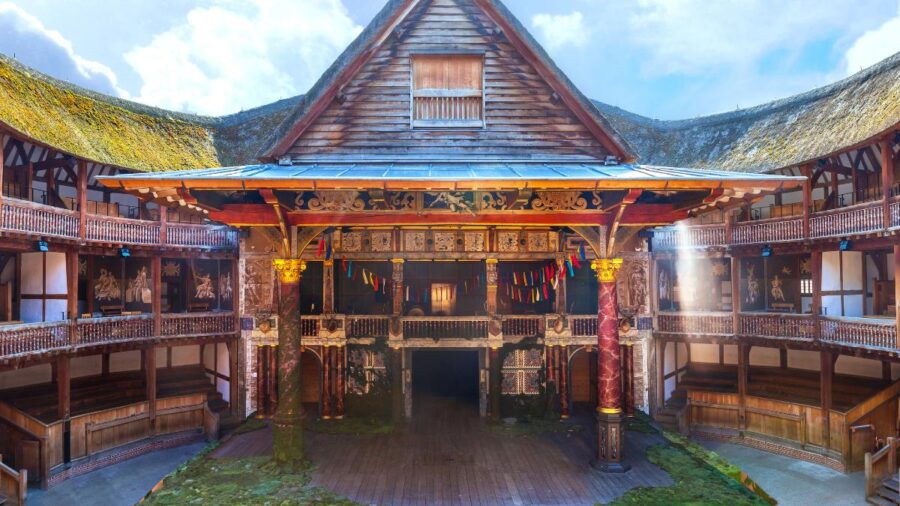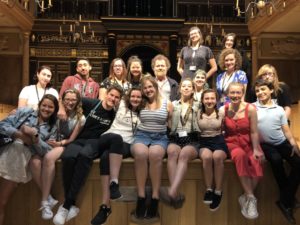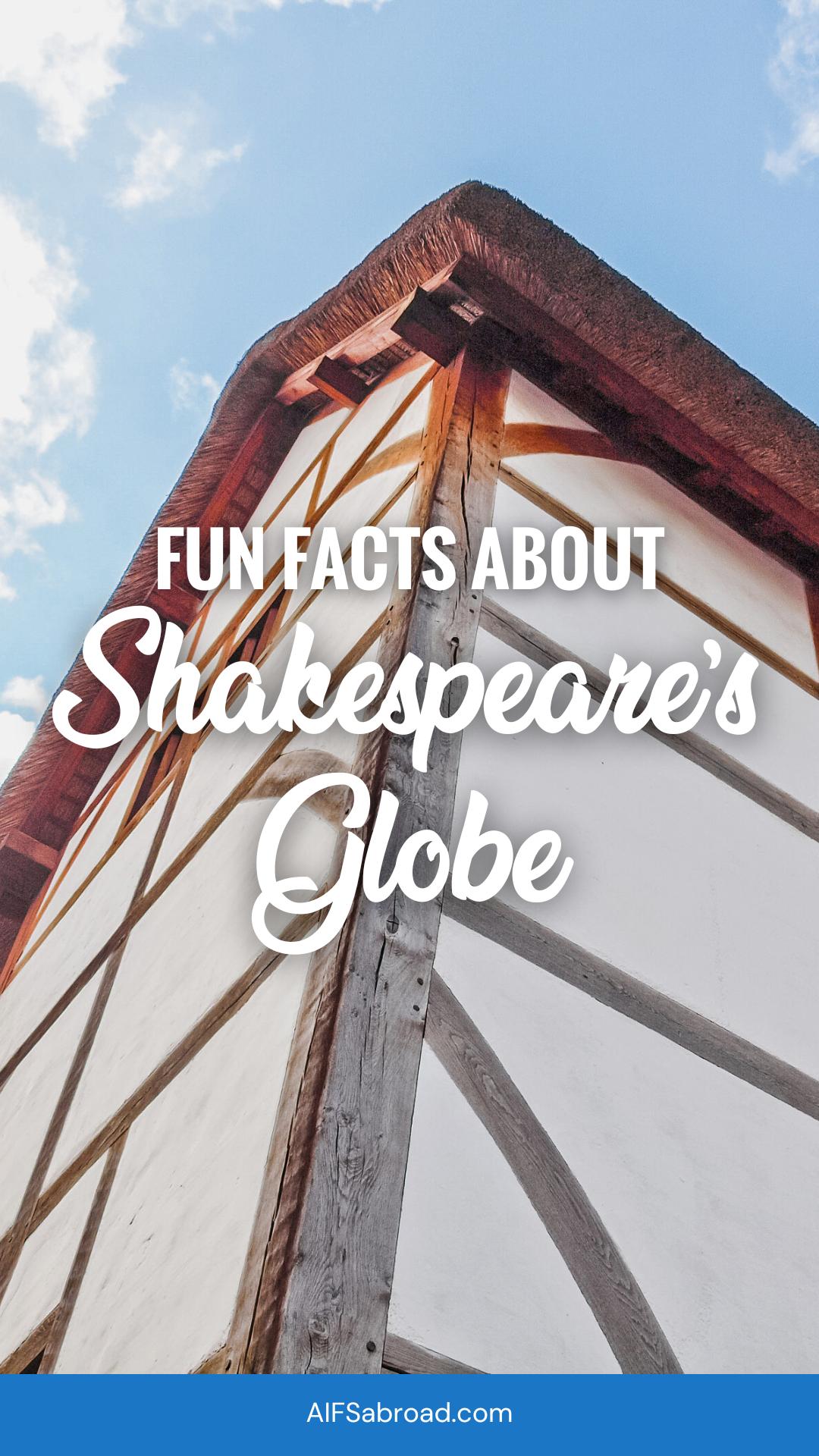
1.7K
You’ve read his plays, seen the productions, and likely quoted him once or twice — but there’s always something new to learn about “The Bard!” As an iconic figure in playwriting and the dramatic arts, we thought it would be fun to visit a few unique facts about William Shakespeare and The Globe Theatre in London, England.
Check out these interesting facts you may or may not know about Shakespeare and The Globe.
1. Shakespeare didn’t build The Globe Theatre alone.
The original Globe Theatre was constructed by the Lord Chamberlain’s Men, a theater company led by actor Richard Burbage that included Shakespeare. It’s said that when their landlord, Mr. Allen, refused to renew their lease, the Burbage family retained ownership by dismantling it during the Christmas holiday and storing the materials on personal property. Unable to afford a new site, Mr. Allen offered joint ownership in the new theater — named The Globe — to a handful of company members, including Shakespeare, for £10 each. With this buy-in, the concept of The Globe was born and plans went into effect to build near the Rose Theatre on the south bank of the River Thames.
2. The Globe’s location and construction were incredibly strategic.
The London neighborhood of Southwark became an ideal location for the new theater to be built. This area was outside of the control of city officials who were displeased with the idea of theater in the first place. The neighborhood was also already a hotspot for entertainment with existing theaters like The Rose and The Swan already well established. Plus, there were numerous other forms of entertainment for patrons there — taverns and brothels among them.
The Globe was constructed as an open-air theater using inexpensive building materials like reeds for roofing and timber walls. As a playhouse, seats along the walls were covered by the roof, but the yard in the center was left uncovered with no ceiling. People of all socioeconomic backgrounds and walks of life were able to attend a performance, but their seats (or lack there of) were correlated to their class. People with little means were typically only able to afford tickets to the ground floor area with no seating, and they had exposure to the elements. Those with means, on the other hand, purchased tickets for higher-level, covered galleries along the perimeter with a better view of the stage.

3. Shakespeare wasn’t the only playwright whose works were performed at The Globe.
It’s said that the first Shakespeare play to be performed at The Globe was Julius Caesar in 1599. Many of his other works were performed there, as well, like Hamlet, Othello, and King Lear. But he wasn’t the only playwright to do so! The works of Thomas Dekker, John Fletcher, Ben Jonson, and others were also performed there.
4. The Globe caught fire in 1613 during a performance of Shakespeare’s Henry VIII.
One day in June during a performance of Shakespeare’s Henry VIII, small cannons were fired nearby using gunpowder that was held down by wadding instead of cannonballs. A piece of burning wadding ignited the thatched roof of the building, which sparked a fire. Luckily, no one was seriously injured, but the building was brought to the ground in roughly an hour. A new structure was built on the original foundation. It remained open until local officials in London closed all theaters in 1642.
5. The “Third Globe” is a reconstruction of the original theater.
Of all the facts about Shakespeare and The Globe Theatre, this one is pretty interesting! In 1970, American actor and director Sam Wanamaker ambitiously sought out a plan to reconstruct Shakespeare’s original Globe Theatre on Bankside in London. His intent was making it as historically accurate as possible — with upgraded construction and safety standards, of course. He established the Shakespeare Globe Trust in 1971 and campaigned for land near the original site. Despite numerous challenges, Sam dedicated 20 years of his life to his vision. Sadly, he passed away in 1993, before witnessing the project’s completion. In 1997, the present-day Globe Theatre was opened and inaugurated by Queen Elizabeth II.
College students: Did you know you can do a study abroad program at Shakespeare’s Globe?

There’s so much to discover about William Shakespeare and The Globe Theatre in London — especially when you study abroad! We offer a summer program during May Term that theater lovers will adore: “Shakespeare’s Globe: History and Performance.”
With credit awarded by Fairfield University, this 3-credit program gives students an incredible opportunity to study the material and cultural contexts of early modern drama. Students will also explore the history and construction of past- and present-day Globe Theatres. The course seeks to demonstrate the historical and current value of Shakespeare’s plays through a practical engagement with text and language, space, the materials of theater practice, and the unique relationship between actors and audience at The Globe.
On top of incredibly high-impact and experiential academics, students will have an immersive cross-cultural experience in London. Our programs are incredibly inclusive, which takes a lot of the stress out of planning. Housing, social and cultural activities, day trips, 24/7 emergency support, comprehensive insurance, and more are included in program fees.
